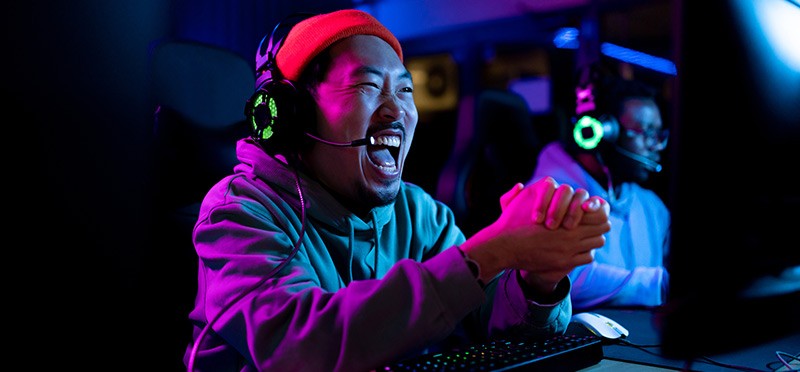There’s nothing like being immersed in a game, which is why encountering any problems along the way can be incredibly frustrating. The last thing your players want to do is take time away from their game, even if they have a question or an issue they need to resolve.
A winning gaming customer experience (CX) strategy resolves players’ inquiries as quickly as possible and gets them back in the game. When they contact customer support, players aren’t looking for good conversation or niceties; they want you to get to the point, resolve their issues, and get them back to playing.
What’s more, gamers increasingly want their questions answered and problems resolved in-game. That means you need the people, tools, and strategy in place to provide seamless in-game CX so players don’t have to migrate to other channels.
Here are five ways to improve CX by giving players more control.
1. Invest in self-service
Self-service options give players the opportunity to try to resolve their own issues before contacting customer support. Empower your players to help themselves wherever and whenever possible.
Self-service options, such as access to frequently asked questions, reduce wait and resolution times and get players back to their game faster, which is what you and your players want. You need a robust and comprehensive knowledge base to power your self-service options, and a seamless way to move players to an associate in those instances when they can’t find what they’re looking for and need to speak to a person.
2. Empower associates to act fast
There will always be some customer inquiries that require a human touch, but resolution speed still needs to be a priority. If associates are going to get players the information they need quickly, they need the tools and skills to work as efficiently as possible.
Intelligent automation, workforce optimization, and streamlined back-office processes can help ensure associates have easy access to all the information they need to resolve issues quickly. When associates can handle inquiries more easily and quickly, it translates to a better experience for players and associates alike.
3. Gather (and use) feedback
How can you find out what gamers want from your customer support? Ask them. Continuously collecting feedback is a great way to gain insights you can use to guide future decisions and strategy.
Ask gamers how they feel about their customer support experience. What was easy? What frustrated them? By asking them, you show you value their input and are committed to providing the best experience possible. And their answers can shed light on gaps in your CX, giving you the opportunity to eliminate pain points and improve experiences. And don’t forget to let customers know when you do implement their feedback, which goes a long way in building trust and customer satisfaction.
4. Personalize your CX
Players want to feel like their gaming experience is catered specifically to them. Personalized support experiences that meet individual gamers’ needs make them feel more connected to your brand, which builds loyalty.
Use individual gaming preferences and histories to craft recommendations and other personalized experiences that show your brand really knows and values them.
5. Offer support in multiple channels
Despite your best efforts, not all inquiries can be handled in-game. For those times when things escalate beyond in-game support, make sure players can reach you via their preferred channel. They want the flexibility to choose which channel that works best for them in that moment, and that means your omnichannel game needs to be strong.
Not only do players expect quick resolutions regardless of channel, they also want a seamless experience if they need to move from one channel to another. This takes a lot of back-office work, automation, and strategy on your end.
An experienced CX partner can help you incorporate all these components into a comprehensive player experience strategy. Consider leaning on an expert partner that specializes in the tools and people needed to level-up your player experience – so you can focus on what you do best: creating gaming environments and communities that keep players coming back for more.
















